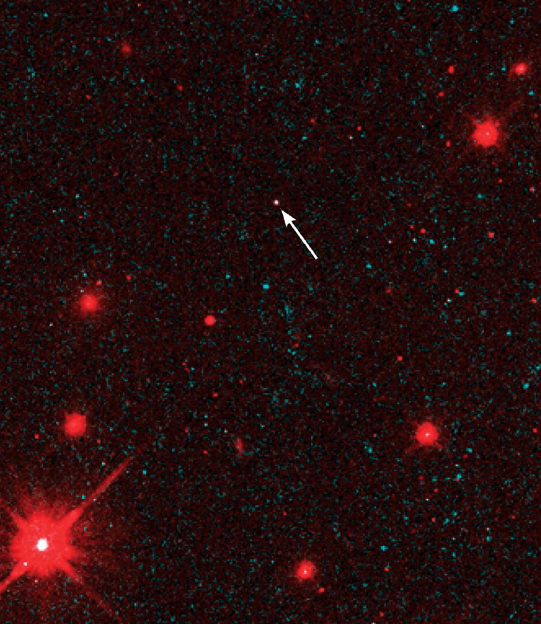1933
Neutron Stars
James Chadwick (1891–1974), Walter Baade (1893–1960), Fritz Zwicky (1898–1974)
Advances in astronomy on the grandest cosmic scales were paralleled in the early twentieth century by advances in physics and chemistry at the molecular, atomic, and subatomic levels. Indeed, atomic physics helped astronomers to make theories and predictions about processes that were difficult to observe directly.
A wonderful example of this synergy between the macroscopic and microscopic came about shortly after the English physicist James Chadwick discovered the neutron in 1932. Neutrons are subatomic particles with about the same mass as protons, but unlike protons and electrons, neutrons do not carry any electrical charge. Without the strong nuclear binding force contributed to an atomic nucleus by neutrons, positively charged protons would repel each other and atoms would be unstable and fly apart.
The discovery of the neutron had a profound effect on astronomy. For example, in 1933 the astronomers Walter Baade and Fritz Zwicky began thinking in detail about the processes that could lead to the gravitational collapse and explosion of massive stars—explosions that Zwicky dubbed supernovae. They speculated that the enormous central pressures and temperatures of such explosions could unbind atomic nuclei and leave compact, remnant objects behind composed mostly of bare neutrons. They called these hypothetical objects neutron stars.
By Baade and Zwicky’s calculations, neutron stars should be rapidly spinning, extremely dense objects, packing one to two times the mass of the Sun into a sphere only about 6 to 7.5 miles (10 to 12 kilometers) across, and having a surface gravity more than 100 billion times Earth’s gravity! Their theory was vindicated when a tiny, massive stellar remnant spinning at 30 revolutions per second was found in 1968 at the heart of the Crab Nebula, created in the supernova of 1054. Thousands of other hot, spinning neutron stars—pulsars—have since been discovered, providing astronomers with very precise “cosmic clocks” with which to study the extreme astrophysics of compact objects.
SEE ALSO “Daytime Star” Observed (1054), White Dwarfs (1862), Eddington’s Mass-Luminosity Relation (1924), Pulsars (1967).
Hubble Space Telescope visible light image of a dim, lone neutron star, which had been first identified in X-ray telescope data as a highly energetic source. To explain both the visible and X-ray data requires the star to be extremely hot and extremely small—the perfect fit for a neutron star.
